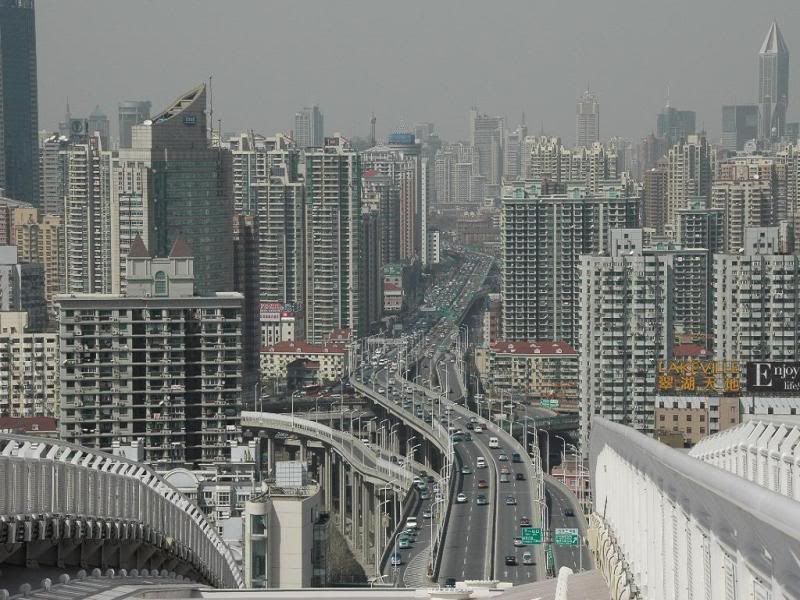The Viaduct is such a ridiculous science-fiction concept. Billions of dollars to make an elevated highway more elevated. But now it will be higher and have cabling! And people will LIVE in the support pillars! And the robot butlers will make all our dreams come true.
Hey Matt... you kinda come off as yet another poster boy for the antiquated "think small, it's Toronto" movement (or more precisely, lack of movement).
Dismissing the viaduct out-of-hand as ridiculous "science fiction" seems just another typical, home-grown pre-emptive strike against ... wait for it ... bold thinking. A wearisome song sung loudly and ad nauseum by so-called Toronto decision-makers, planners and managers.
While the "condos in piers" element is perhaps approaching your sci-fi characterization, the fundamental premise of the viaduct isn't crazy at all:
1. what if the rotting downtown portion of our "psychological" barrier (elevated Gardiner) could be replaced with a cable-stayed,
boulevard-paced mobility corridor (traffic, transit, ride/walk) which.... thanks to it's proposed location over the rail corridor using cantilever construction techniques (a cable-stayed specialty)... could be built with little disruption to the existing expressway (avoiding anything approaching Boston's 13 year chaos and cost).
2.
"make an elevated highway more elevated" - that's just dead wrong.
The western section (CNE to Union) of the structure is proposed to float j
ust above grade, over the
below-grade rail corridor... that canyon that is also known as a "real" physical barrier to the waterfront. The notion is actually (given the viaduct"s proximity to grade), it could also act as a sort of structural spine to host a number of north/south pedestrian connections over the rail corridor barrier... something that humanoids in the waterfront, Cityplace and even the entertainment district might actually consider a good idea.
3. what if
the project cost (mitigated somewhat by the value of land reclaimed when the Gardiner is demolished, and perhaps even tolls) was roughly
half of the oft-discussed tunnelling concept? Now there's a piece of science FICTION for you - namely any past, present or future budget estimates for a tunnelling option.
Indeed there are dozens of reasons why the viaduct wouldn't work (Union Station obviously wouldn't welcome such a neighbour) but there are more than a few nuggets in the proposal such as rebuilding the east of Yonge barrier... the elevated rail berm ... with north/south pedestrian connections to East Bayfront through newly harvested functional space (parking, shopping etc.). This idea is hardly science fiction. It's a brilliant way to
penetrate that particular permanent barrier.
It's pretty clear the viaduct concept will never be given the time of day in this city, but dismissing it out-of-hand with little more than a roll of eyes is of no merit. I'll wager 3 cases of
UT green whine that we'll one day see something like this used to solve a similar urban challenge, somewhere... in the right circumstances, the cantilever, modular construction elements available to cable-stayed designs offers an invaluable alternative to massive civic disruption.
IMO the legitimate contribution this concept makes is proposing we do indeed try to find a way to rid the city of the Gardiner, without having to sacrifice the quality of city life for a decade. With due respect to future generations, I'd really like to continue enjoy living downtown while bearing witness to an irresistible city-building exercise such as vaporizing the Gardiner.
It's easy to play clever by taking superficial forum swipes at thinking that doesn't conform, but I see little merit in it... just contributes to censorship of occasional blue-sky ideas. This city sorely needs more of this pie-in-the-sky thinking as a foil to the guaranteed do nuthin' or do little city mantra.
Afterall, the only completely absurd component of the viaduct concept is the public realm
skyPATH... but this can be excused as it was birthed from the recently lobotomized grey matter of someone coping with early on-set dementia.








